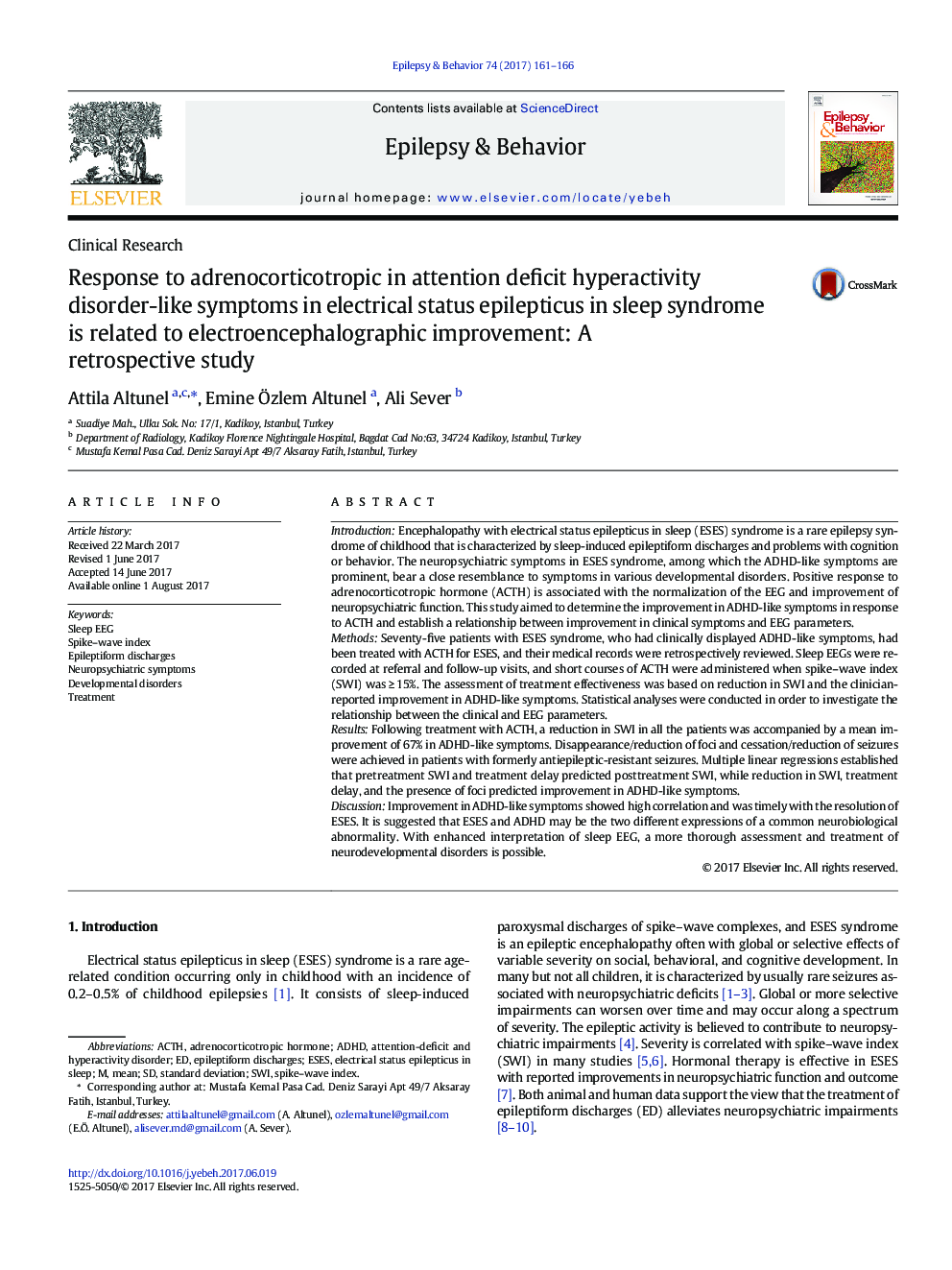| کد مقاله | کد نشریه | سال انتشار | مقاله انگلیسی | نسخه تمام متن |
|---|---|---|---|---|
| 5628224 | 1579819 | 2017 | 6 صفحه PDF | دانلود رایگان |
- Treatment of ESES syndrome with ACTH reduced SWI and improved ADHD-like symptoms.
- Foci disappeared and seizures ceased in patients with formerly antiepileptic-resistant seizures.
- Pretreatment SWI and treatment delay predicted posttreatment SWI.
- SWI reduction, treatment delay, and foci presence predicted clinical improvement.
- Early treatment in ESES syndrome necessitates early EEG recognition.
IntroductionEncephalopathy with electrical status epilepticus in sleep (ESES) syndrome is a rare epilepsy syndrome of childhood that is characterized by sleep-induced epileptiform discharges and problems with cognition or behavior. The neuropsychiatric symptoms in ESES syndrome, among which the ADHD-like symptoms are prominent, bear a close resemblance to symptoms in various developmental disorders. Positive response to adrenocorticotropic hormone (ACTH) is associated with the normalization of the EEG and improvement of neuropsychiatric function. This study aimed to determine the improvement in ADHD-like symptoms in response to ACTH and establish a relationship between improvement in clinical symptoms and EEG parameters.MethodsSeventy-five patients with ESES syndrome, who had clinically displayed ADHD-like symptoms, had been treated with ACTH for ESES, and their medical records were retrospectively reviewed. Sleep EEGs were recorded at referral and follow-up visits, and short courses of ACTH were administered when spike-wave index (SWI) was â¥Â 15%. The assessment of treatment effectiveness was based on reduction in SWI and the clinician-reported improvement in ADHD-like symptoms. Statistical analyses were conducted in order to investigate the relationship between the clinical and EEG parameters.ResultsFollowing treatment with ACTH, a reduction in SWI in all the patients was accompanied by a mean improvement of 67% in ADHD-like symptoms. Disappearance/reduction of foci and cessation/reduction of seizures were achieved in patients with formerly antiepileptic-resistant seizures. Multiple linear regressions established that pretreatment SWI and treatment delay predicted posttreatment SWI, while reduction in SWI, treatment delay, and the presence of foci predicted improvement in ADHD-like symptoms.DiscussionImprovement in ADHD-like symptoms showed high correlation and was timely with the resolution of ESES. It is suggested that ESES and ADHD may be the two different expressions of a common neurobiological abnormality. With enhanced interpretation of sleep EEG, a more thorough assessment and treatment of neurodevelopmental disorders is possible.
Journal: Epilepsy & Behavior - Volume 74, September 2017, Pages 161-166
